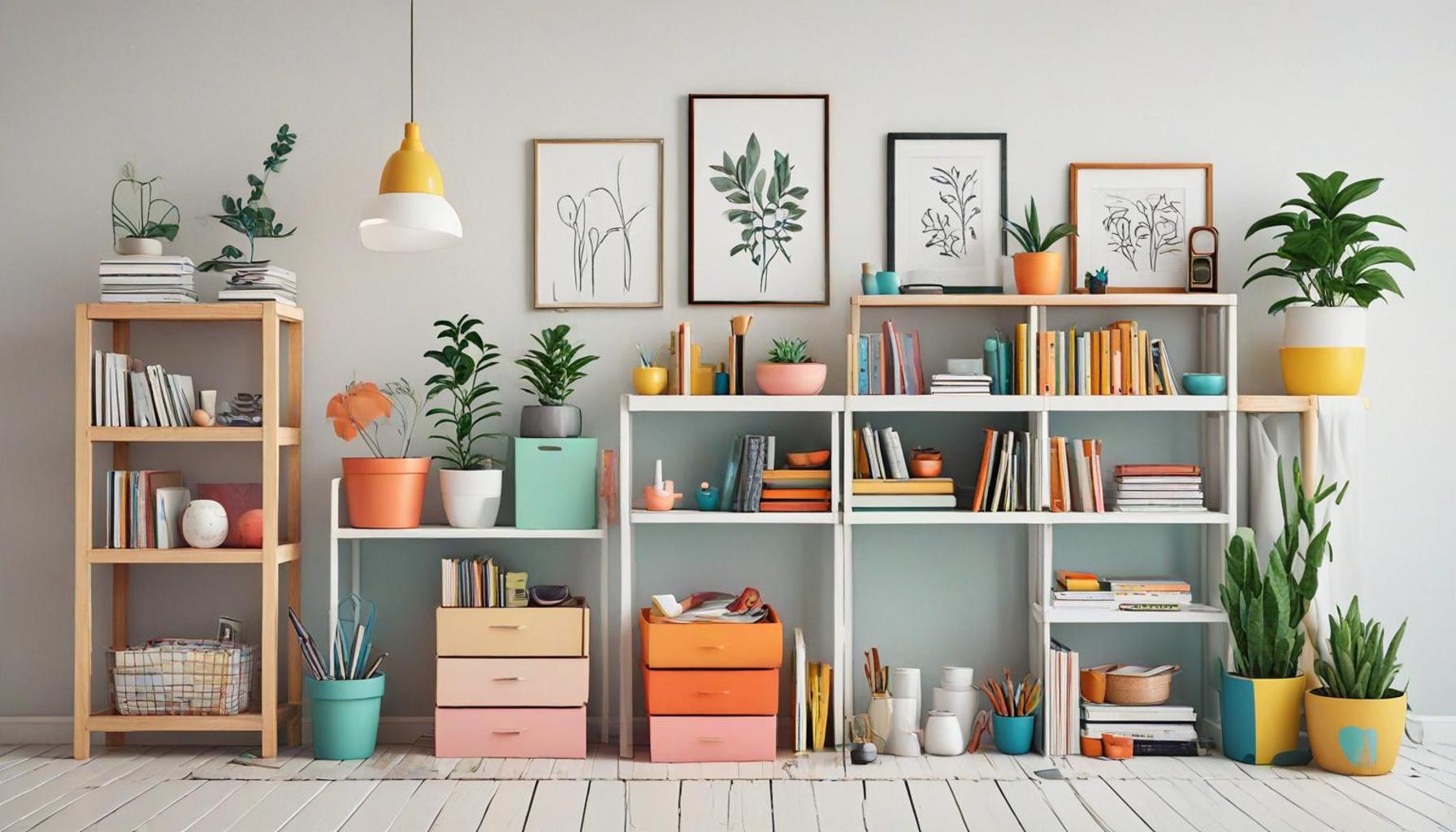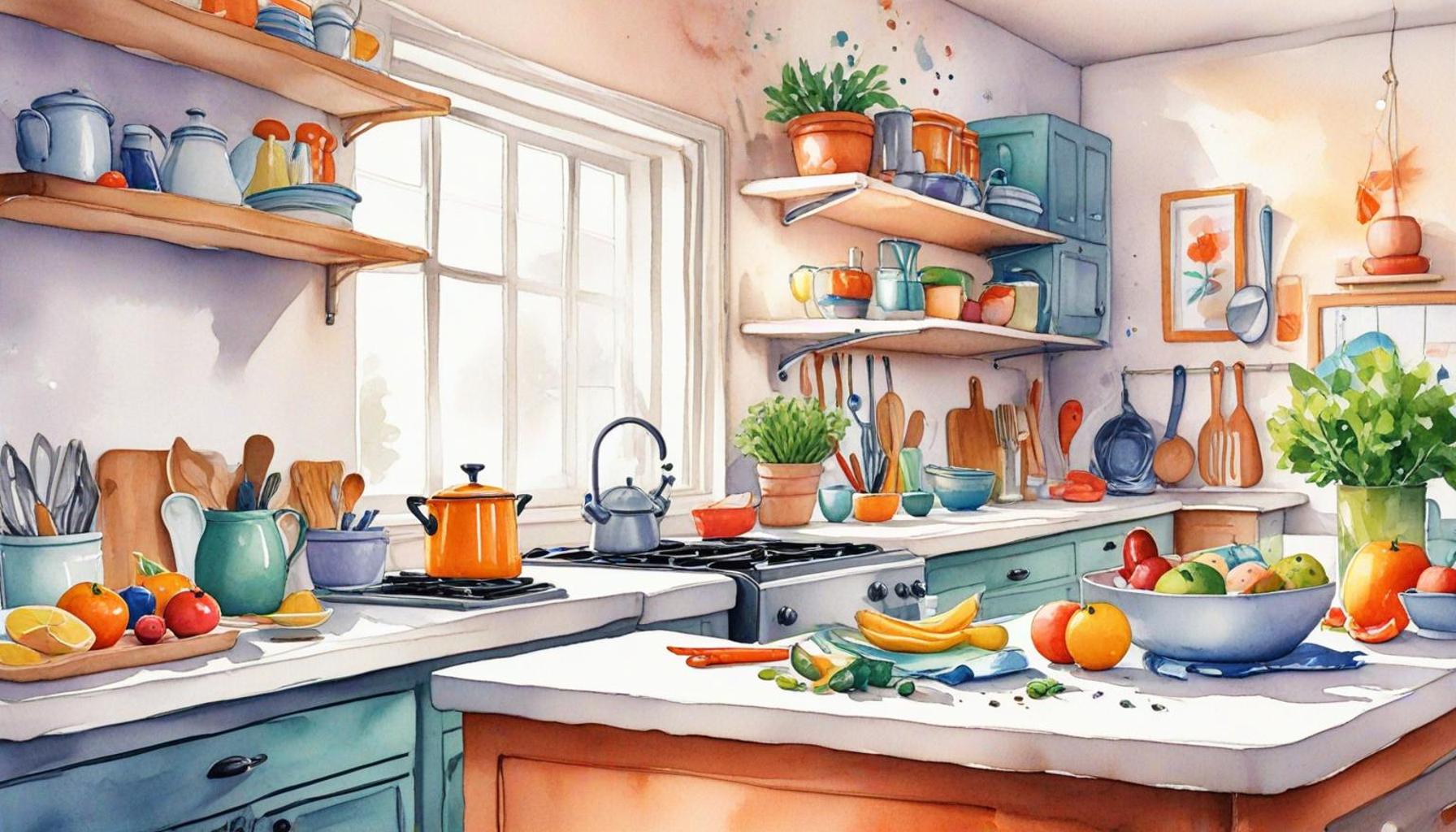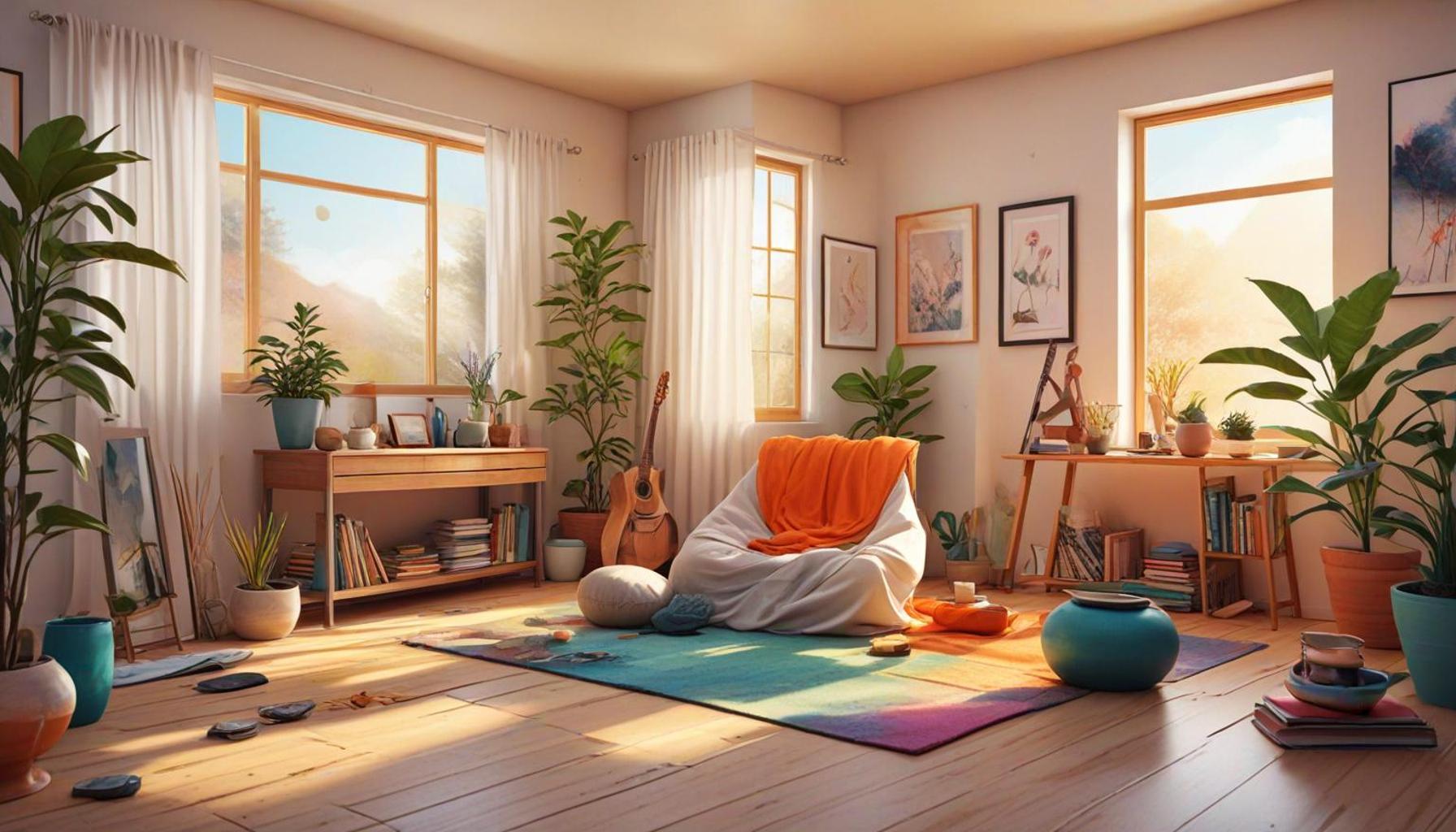How to Create a Minimalist Organization System for Your Home: Essential Decluttering Tips

Understanding the Impact of Clutter
Clutter has an insidious way of encroaching upon our lives, both physically and mentally. As items accumulate in our homes, they not only invade our space but can also cloud our minds, leaving us feeling stressed and overwhelmed. Minimalism, a philosophy rooted in simplicity and intentionality, provides a practical solution to this problem. By adopting minimalist principles, we can transform our living areas into serene spaces that enhance focus, creativity, and overall well-being.
The Allure of Minimalism
Many individuals find themselves gravitating toward minimalism for an array of reasons that resonate on personal, emotional, and environmental levels. For instance:
- Reduced stress: A clutter-free home has been shown to significantly decrease anxiety levels. Research indicates that clean and organized environments can lead to higher levels of overall satisfaction and less stress.
- Increased functionality: By maintaining only essential belongings, you open up more functional space in your home. This means easier access to items you genuinely need, which can streamline daily tasks and enhance your productivity.
- Simplified life: Minimalism invites a shift toward mindfulness, encouraging individuals to make conscious purchasing decisions. This approach often results in less waste and a lower carbon footprint, aligning with sustainable living goals.
Practical Techniques for Decluttering
Embarking on a decluttering journey can feel daunting, but with the right techniques, it can become a rewarding and manageable experience. Here are a few foundational tips to guide you:
- Start small: Begin by focusing on one area or room at a time—this might be a single closet or a kitchen drawer. Tackling smaller sections can help build momentum.
- Set clear goals: Clearly define what you want to accomplish. Whether it’s creating a peaceful bedroom for better sleep or an organized office for improved productivity, having specific aims can help keep you motivated.
- Evaluate each item: Adopt the practice of asking yourself key questions about your belongings. Does this item serve a purpose? Does it ignite joy? This evaluation can help you make informed decisions about what to keep and what to let go.
A Personalized Approach to Minimalism
As you delve deeper into the minimalist lifestyle, it’s vital to recognize that what works for one person may not necessarily work for another. The journey of minimalism is inherently personal and can vary greatly depending on individual needs, lifestyles, and aspirations. For example, a family with young children may approach minimalism differently than a retired couple.
Ultimately, the goal is not only to declutter but to discover a way of living that resonates with you personally, leading to a more organized and meaningful home life. In this pursuit, consider exploring books, documentaries, and online communities that focus on minimalism for additional insight and inspiration. By embracing this philosophy, you may find not just a clearer space, but a clearer mind as well.
DISCOVER MORE: Click here to find effective digital declutter strategies
Practical Techniques for Decluttering
Embarking on a decluttering journey can feel daunting, but with the right techniques, it can become a rewarding and manageable experience. To effectively create a minimalist organization system for your home, consider the following essential decluttering tips that can set you on the right path:
- Start small: Begin by focusing on one area or room at a time—this might be a single closet or a kitchen drawer. Tackling smaller sections can help build momentum and make the process feel less intimidating. You might be surprised at how much clarity can emerge from a mere drawer full of mismatched utensils.
- Set clear goals: Clearly define what you want to accomplish with your decluttering project. Whether your aim is to create a peaceful bedroom for better sleep or an organized office space to enhance productivity, having specific aims can help keep you motivated and focused throughout the process. It can be beneficial to visualize the end result to reinforce your commitment.
- Evaluate each item: Adopt the practice of asking yourself key questions about your belongings. Does this item serve a purpose? Does it ignite joy? This evaluation can help you make informed decisions about what to keep and what to let go. As you sort through your items, consider creating a three-box system labeled “Keep,” “Donate,” and “Discard” to streamline your decision-making process.
- Implement a one-in-one-out policy: As you begin to clear out the clutter, consider adopting a one-in-one-out policy for the future. For every new item you bring into your home, commit to removing one item to maintain balance and prevent the accumulation of unnecessary possessions. This practice can help foster a more intentional approach to purchasing.
- Organize by category: When decluttering, organizing by category rather than by room can provide a clearer picture of what you own. For instance, gather all your books in one place, assess their relevance, and decide which ones truly deserve to stay. This strategy often exposes how many similar items you possess, which can prompt more decisive action.
In addition to these practical tips, embracing a minimalist mindset is essential. This means recognizing that less can be more and that every item in your home should hold value or significance in your life. As you engage with this philosophy, remember to take your time; decluttering is not a race, but rather an evolving journey towards a more meaningful living space.
Lastly, consider the social and cultural implications of minimalism in your community. For Americans in particular, consumerism has long been stitched into the fabric of everyday life. Thus, adopting a minimalist approach isn’t just about decluttering your home—it’s also a commitment to rethinking your relationship with material possessions. By shifting your focus to what truly matters, you create not only a more organized home but also a more fulfilling lifestyle.
Organizing Your Space with Purpose
Creating a minimalist organization system involves more than just decluttering; it requires a strategic approach that prioritizes functionality and simplicity. As you embark on your journey to a more organized home, consider the following essential strategies:
1. Assess and Prioritize Your Needs
Begin by evaluating each room in your home. Identify the areas that require the most attention and prioritize them based on usage and necessity. For instance, a clutter-free kitchen can significantly enhance your cooking experience. Make a list of items that are essential and those that are seldom used. This preliminary assessment will serve as a blueprint for your decluttering efforts.
2. The ‘One In, One Out’ Rule
To maintain an organized space, adopt the ‘one in, one out’ rule. This principle states that for every new item you bring into your home, an existing item must be removed. This strategy prevents accumulation and encourages mindful consumption. Consider implementing this rule in all aspects of your home, from clothing to kitchen gadgets.
3. Utilize Functional Storage Solutions
Invest in multifunctional furniture and smart storage solutions that maximize space without adding visual clutter. Items like ottomans with storage capabilities or under-bed containers can provide practical solutions for maintaining a minimalist aesthetic while offering storage options. Clear bins and labeled containers can enhance both accessibility and organization, making it easier to locate everyday items.
4. Designate Specific Areas for Items
Establish specific zones for different categories of items within your home. For example, create designated spaces for paperwork, mail, and other essentials in a home office. This not only helps in avoiding chaos but also streamlines the process of putting things away. Clear demarcations of where items belong will foster a habit of returning objects to their rightful places.
5. Continual Reflection and Adjustment
Minimalism is an ongoing journey. Regularly reassess your space and your needs. As seasons change or as your lifestyle evolves, so too might your organization system. Taking the time to reflect on what works and what does not can help sustain a minimalist environment that nurtures peace and productivity.By incorporating these strategies, you will not only create an organized living space but also cultivate a more mindful approach to your possessions, paving the way for a rewarding minimalist lifestyle.
DIVE DEEPER: Click here to unlock digital declutter strategies
Developing Sustainable Habits for Long-Term Minimalism
As you embark on your minimalist journey with decluttering, it is equally important to think about how to maintain your newly established organized space. Building sustainable habits ensures that your home truly reflects your minimalist philosophy over time, rather than devolving back into disarray. Here are some effective strategies for fostering lasting minimalism:
- Regular decluttering sessions: Schedule consistent intervals to reassess and declutter your belongings. Monthly check-ins, for example, can help you reflect on any new items that have entered your home and evaluate whether they align with your minimalist goals. Dedicating just a few minutes each month can prevent clutter from building up again and keep your space feeling fresh and organized.
- Mindful shopping practices: In a world filled with constant consumerism, being intentional about your purchases is crucial. Ask yourself whether you truly need an item before making a purchase. Resist impulse buying by allowing a waiting period, say 24 to 48 hours, before deciding to acquire a new item. This gives you time to evaluate its necessity and fit with your minimalist lifestyle.
- Create “home” for everything: To prevent clutter from resuming, ensure that each item in your home has a specific designated spot. When everything has its place, you’ll find it easier to put things back where they belong after use, minimizing the chaos that often leads to clutter. Use labeled bins, baskets, or drawer organizers for a more systematic approach, making it simple to maintain order.
- Incorporate digital decluttering: In addition to physical items, consider the digital clutter that often goes unnoticed. Regularly declutter your email inbox, file digital documents, and organize your photos and apps. Not only does this reduce visual chaos on your devices, but it can also enhance your productivity and make your digital experience more enjoyable.
- Join or create a minimalist community: Surrounding yourself with supportive individuals who share your minimalism aims can profoundly impact your journey. Engage with local or online communities, such as Facebook groups or Reddit forums, where you can exchange tips, encouragement, and stories of success. This social support can enhance your commitment and provide refreshing new perspectives on maintaining your minimalist organization system.
Furthermore, research indicates that individuals who embrace a minimalist lifestyle often report higher levels of happiness and satisfaction. A study published in the journal Environment and Behavior found that living in a clutter-free environment can lead to reduced stress levels and enhanced mental clarity. By committing to decluttering not only your space but also your mindset, you consciously choose a lifestyle that prioritizes well-being over material possessions.
As you forge ahead with your minimalist organization approach, remember that this journey is unique to you. Everyone’s relationship with their belongings and space varies. By discovering what works best for you and cultivating sustainable habits, you set yourself up for success in achieving not merely an organized space but a harmonious and intentional way of living.
DISCOVER MORE: Click here for insights
Embracing the Minimalist Lifestyle: A Path to Clarity and Freedom
As you conclude your journey towards creating a minimalist organization system in your home, it’s essential to reflect on the transformation that accompanies this endeavor. The essential decluttering tips discussed throughout this article serve as the foundational pillars that will empower you to craft a serene and harmonious living space. By introducing a tailored organization system, infusing it with sustainable habits, and fostering an intentional lifestyle, you are not just decluttering; you are embracing a philosophy that prioritizes clarity and well-being.
Minimalism is much more than a trend; it is a mindset that invites you to reassess your relationship with physical possessions. Each item you keep should bring you joy, utility, or peace. By practicing regular decluttering, maintaining mindful shopping habits, and creating designated spaces for your belongings, you learn to appreciate quality over quantity – a deliberate choice that can lead to profound satisfaction.
Moreover, don’t underestimate the impact of community support and ongoing education in this journey. Connecting with like-minded individuals can offer motivation, inspiration, and valuable insights. As you cultivate your minimalist organization system, remember that the process is ongoing and ever-evolving. This is not merely about creating a clutter-free home; it’s about setting the stage for a fulfilling, intentional life.
Ultimately, adopting minimalism can enhance your mental clarity, reduce stress, and allow more room for experiences that truly matter. As you embrace this lifestyle, you open the door to freedom – freedom from clutter, from excess, and from distractions, paving the way for a more peaceful existence. Start today, and witness the transformative effects of minimalism in your home and life.


